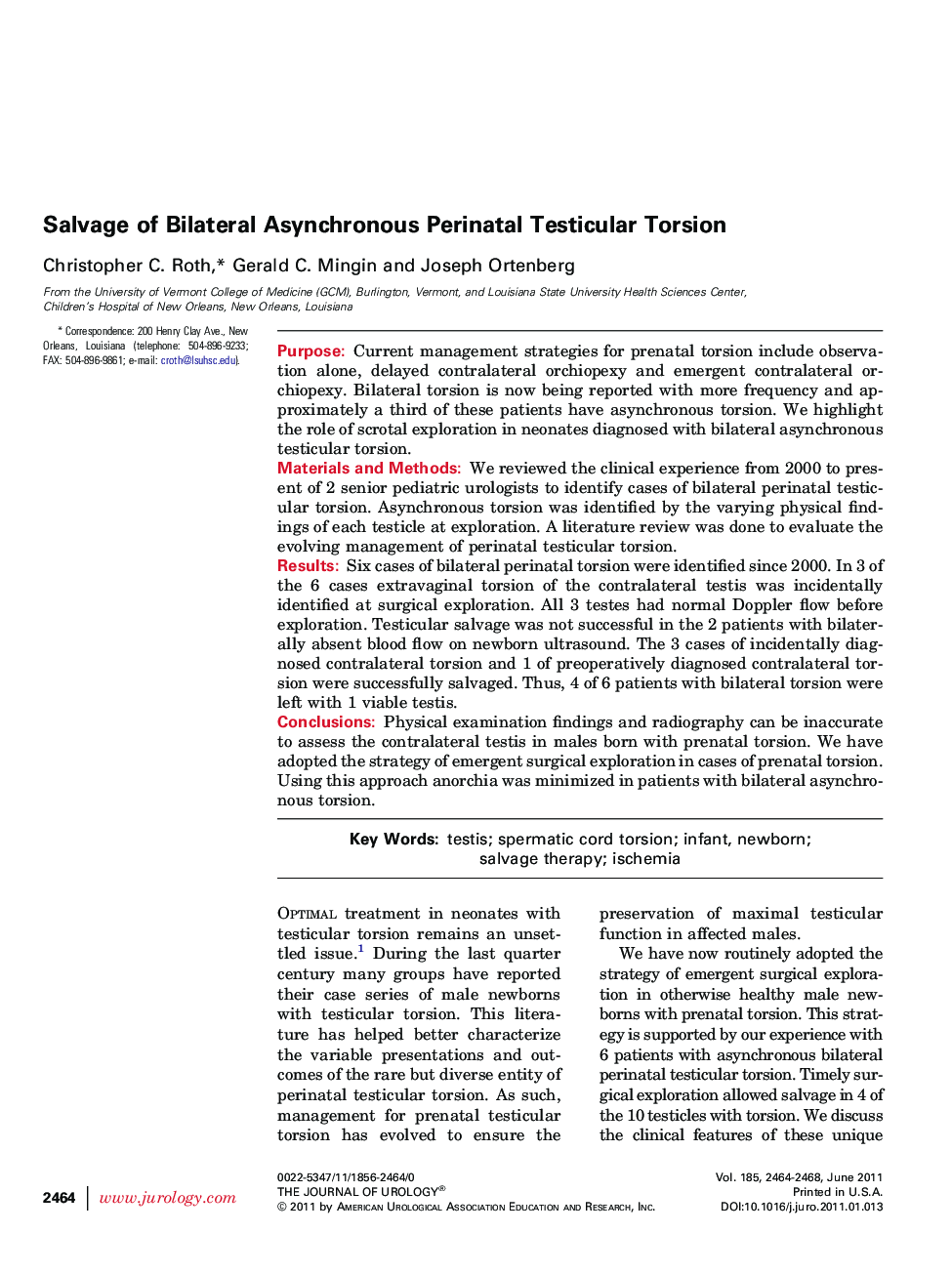| Article ID | Journal | Published Year | Pages | File Type |
|---|---|---|---|---|
| 3866340 | The Journal of Urology | 2011 | 5 Pages |
PurposeCurrent management strategies for prenatal torsion include observation alone, delayed contralateral orchiopexy and emergent contralateral orchiopexy. Bilateral torsion is now being reported with more frequency and approximately a third of these patients have asynchronous torsion. We highlight the role of scrotal exploration in neonates diagnosed with bilateral asynchronous testicular torsion.Materials and MethodsWe reviewed the clinical experience from 2000 to present of 2 senior pediatric urologists to identify cases of bilateral perinatal testicular torsion. Asynchronous torsion was identified by the varying physical findings of each testicle at exploration. A literature review was done to evaluate the evolving management of perinatal testicular torsion.ResultsSix cases of bilateral perinatal torsion were identified since 2000. In 3 of the 6 cases extravaginal torsion of the contralateral testis was incidentally identified at surgical exploration. All 3 testes had normal Doppler flow before exploration. Testicular salvage was not successful in the 2 patients with bilaterally absent blood flow on newborn ultrasound. The 3 cases of incidentally diagnosed contralateral torsion and 1 of preoperatively diagnosed contralateral torsion were successfully salvaged. Thus, 4 of 6 patients with bilateral torsion were left with 1 viable testis.ConclusionsPhysical examination findings and radiography can be inaccurate to assess the contralateral testis in males born with prenatal torsion. We have adopted the strategy of emergent surgical exploration in cases of prenatal torsion. Using this approach anorchia was minimized in patients with bilateral asynchronous torsion.
